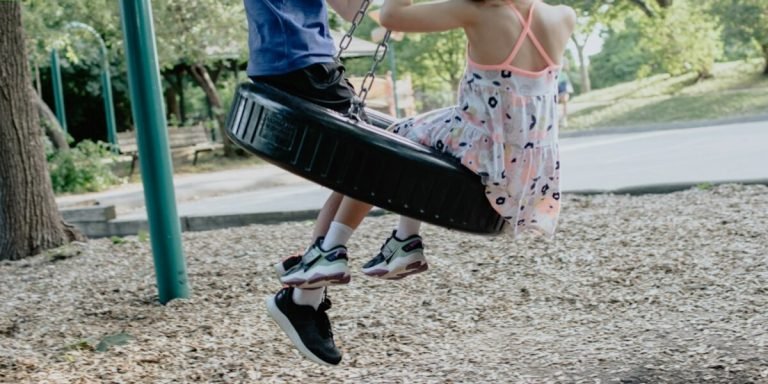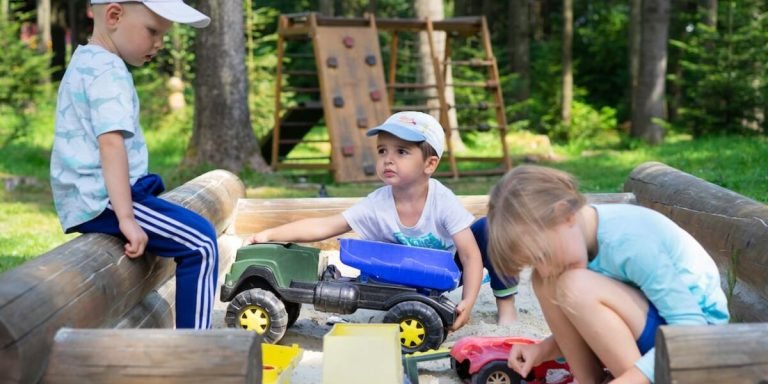Kids Creative Activities at Home: Fun and Engaging Ideas to Enhance Learning
Fostering a love for learning in your child can be an exciting adventure, especially when incorporating kids’ creative activities at home. These hands-on experiences not only engage students but also enhance their understanding and retention of new concepts. From arts to science experiments, such activities contribute significantly towards Activity Based Learning – adapting an experiential approach that stresses the significance of ‘learning by doing’.
Activity-Based Learning is often seen as complex or daunting to implement within the homely environment; however, it’s quite simple once you have some fun and engaging ideas on hand. This blog post aims to guide parents through various innovative ways they can incorporate this teaching methodology into their daily routines through kids’ creative activities at home – turning every corner of your house into potential sites for exploration and discovery.
Did you know?
Did you know? Researchers at the University of Washington found that role-play activities can enhance a child’s cognitive development, promoting problem-solving skills and fostering creativity.
Exploring the Benefits of Activity-Based Learning for Children
In an era where digital learning tools are at the forefront of education, incorporating technology integration into activity-based learning can offer a myriad of benefits for children. The blend of physical and digital environments allows kids to engage in constructive play while also developing crucial cognitive skills. This method is particularly effective when implemented within the confines of home settings.
With creative activities like building virtual models or conducting online experiments, parents can ensure their little ones grasp complex educational concepts while having fun.
Activity-based learning fosters curiosity and creativity among children by letting them explore various subjects hands-on through exciting tasks and projects that bridge academic understanding with real-world application. For instance, STEM-focused games teach problem-solving abilities enabling youngsters to understand logical reasoning intuitively rather than rote memorization prevalent in traditional teaching methods.
Technology acts as a catalyst amplifying this mode’s effectiveness; it transforms household spaces into interactive classrooms enhancing learners’ tech-fluency along with core subject knowledge.Pivoting towards such innovative solutions cultivates independent thinking equipping todays’ youth better for tomorrow’s technologically advanced society.Tailoring technologies around these experiences presents endless possibilities making now more opportune time than ever before,to introduce your child to dynamic modes like activity based-learning via ‘creative activities at home’.
Understanding Kinesthetic Learning through Activities
Kinesthetic learning -active, physical engagement in the process- is a powerful tool for childhood education. Especially relevant now, as we navigate unprecedented times with technology integration and kids’ creative activities at home becoming paramount.
Simply put, kinesthetic learners learn by doing. They grasp concepts better when movement is involved. This might include manipulating objects, participating in hands-on tasks or even just moving around while processing information.
One of the standout benefits of activity-based learning lies within its immersive nature which can be incredibly beneficial to young learners who thrive best when they’re actively engaged rather than passively absorbing facts from a lecture or text.
The introduction of technology integration into this mix has opened up an entirely new world filled with exciting possibilities for parents seeking ways to support their children’s academic development at home. Through interactive games and experiential simulators on tablets or computers students get real-time feedback making mistakes less scary and more intuitive part of the process!
Enhancing Cognitive Development with Hands-On Experiences
In the realm of child education, empowering youngsters with hands-on experiences is pivotal in enhancing their cognitive development. Activity-based learning integrates seamlessly into this approach, offering several advantages through kid’s creative activities at home.
Firstly, such activities provide a much-needed break from traditional classroom formats which can sometimes become monotonous for children. When kids engage in activity-based learning at home like building blocks or creating crafts out of recycled materials; they are not just playing but also improving their analytical and problem-solving skills.
Additionally, these type of assignments enhance motor skill development as well. For instance; drawing, painting or origami exercises offer an excellent way to develop fine motor skills while fostering creativity simultaneously.
Activity based-learning allows for enhanced technology integration too—specifically when applied to STEM-related tasks. With access to various online tools available now (in 2023), parents and educators have ample resources helping them introduce complex concepts innovatively using animations,videos,games etc., making it easier for kids to comprehend those difficult topics visually rather than theoretical texts .
What makes ‘Kids’ creative activities at-home’ more effective is how they cater towards individualistic pace without inducing stress amongst learners . Each learner has their unique speed which should be respected because pressure-free environments catalyze better understanding pathways leading boosted self-confidence among young pupils.
Innovative Home-Based Creative Activities for Young Learners
Engaging children in creative activities at home has taken a new turn with the integration of technology. As we embrace 2023, parents and educators are increasingly leveraging digital tools to foster activity-based learning for young learners right from their living rooms.
The blend of creativity and technology opens up limitless possibilities for innovative home-based activities designed especially for youngsters. Through interactive stories on educational apps, kids can explore folklore or history while enhancing their listening comprehension skills. Virtual art platforms allow them to create digital paintings that encourage visual-spatial abilities alongside kindling artistic instincts.
Moreover, online programming games like Scratch introduce coding concepts through fun-filled projects—a perfect mix of play addressing logical thinking development simultaneously cultivating an interest in STEM fields from early childhood days itself. Remember though as fantastic as these resources are; they should complement traditional creative pursuits such as crafting or painting rather than replacing them entirely—it’s all about striking that balance!
Role-playing scenarios using augmented reality (AR) have also been making waves recently in the arena of childhood education being one significant example exemplifying how inventive tech-driven methods could be when employed correctly supporting young minds’ well-rounded growth.
Crafting Educational Play Spaces at Home
Crafting educated play spaces at home is an engaging and exciting way to boost the learning experience of young learners. In our modern world, where technology integration in education has become more prominent than ever before, it’s crucial to make sure that kids’ creative activities at home are not just fun but also educational.
To get started with crafting your child’s personal ‘classroom’, you can focus on dedicating a specific corner of their room for this purpose. With the right furniture and resources like books or interactive toys, you can create an environment that encourages activity-based learning.
Using smart speakers such as Amazon Echo or Google Home in play areas is another fantastic idea which gives access to thousands of interactive stories and quizzes designed specifically for enhancing academic knowledge along with creativity amongst youngsters.
Similarly, introducing coding kits accessible via tablets might seem too complex initially; however they perfectly blend craft work with basic programming concepts . Through drag-and-drop blocks containing simplified code commands , even preschoolers get comfortable using such technological interfaces .
Integrating Household Items into Learning Games
Engaging children in creative activities at home can be a fun and enriching learning experience. It’s even better when we integrate common household items into these games, making them relevant to daily life while also fostering creativity.
One way parents or educators could do this is by creating treasure hunts using ordinary things around the house. Each item found could represent an alphabet letter, number or color – depending on what educational aspect you want the child to learn. This activity will not only help kids exercise their cognition but also stimulate physical movement and coordination skills.
Science experiments are another excellent method for integrating household objects into education-oriented playtime moments that promote active-based learning. For instance, materials like water, food coloring and old kitchen utensils can facilitate understanding of basic concepts such as cause-effect relationships through observation.
Digital technology too has paved a new course for educating youngsters with innovative applications available online that convert simple pictures taken from everyday articles into 3D models! Kids may capture images in an app which will then transform those stills into three-dimensional figures right before their eyes; thereby enhancing comprehension about shapes and dimensions whilst engaging them digitally!
Puzzles crafted from recycled cardboard boxes make both eco-friendly entertainment tools plus fantastic exercises for problem-solving abilities! Through cutting random shapes out of cartons followed by mixing all pieces up together – learners would need to fit everything back accordingly thus improving spatial awareness along cognitive development simultaneously.
Strategies to Foster Child Engagement in Home Education
As the landscape of education continuously evolves, technology integration and activity-based learning become more central to fostering child engagement in home schooling. In 2023, kids’ creative activities at home have transformed significantly from simple arts and crafts sessions to versatile little tech labs which combine creativity with new age digital tools.
Parents are now adopting strategies that not only engage their children intellectually but also promote hands-on interaction with technological devices. These range from virtual art platforms for painting enthusiasts to coding kits for budding programmers – thereby ensuring a balanced educational atmosphere that is both enjoyable yet informative.
Activity-Based Learning (ABL), an approach providing practical experience over text-based instruction, has proven instrumental here as well. By integrating ABL into daily routines through puzzle-solving apps or DIY project tutorials on YouTube channels promotes better comprehension among youngsters while simultaneously making them technologically savvy. This prepares them adequately for the high-tech future ahead; all whilst being within the comfort & safety of their own homes.
Encouraging Self-Directed Learning with DIY Projects
In the domain of childhood education, encouraging self-directed learning through DIY projects appears to be a highly successful strategy. It lets children experience autonomy while making them active participants in their own education. Given the current year 2023 and considering how technology integration has become essential in every aspect of life including child engagement at home, turning everyday household chores into learning experiences can prove crucial.
To help your little one engage with creative activities at home, follow these recommended steps:
1. Choose Simple Projects: Start with manageable tasks that your kid finds interesting – this could range from baking cookies (which would teach measurement concepts) to building bird feeders (introducing aspects about wildlife).
2. Use Technology as Aid: Various apps provide step-by-step guides for undertaking different types of DIY projects which can further facilitate independent learning.
3. Create A Learning Environment: Set up an area designated for these projects where imagination roams free—this could include all necessary materials readily available ensuring minimal adult intervention needed during project execution.
5.Link it With Curriculum: Connect these fun hands-on engagements back with school learnings planning tasks targeted towards enhancing specific skills e.g., creating puzzles aids cognitive development whereas painting promotes fine motor skills.
Utilizing Technology to Supplement Traditional Creative Endeavors
Incorporating technology into your child’s learning journey can significantly enhance their knowledge and creativity. Here are some ways to blend traditional creative activities with technological advancements.
1. Virtual Art Classes: Let’s consider kids’ creative activities at home like painting or drawing, which naturally allow children to express themselves artistically. You could take this a notch higher by enrolling them for virtual art classes where they learn from experts around the world right in the comfort of your own home.
2. Coding Camps: Learning how to code is no less than acquiring an additional language skill these days. It boosts problem-solving skills while inspiring creativity in young minds as they invent games or unique programs on their computer screens.
3.Educational Apps: Numerous educational gaming apps stimulate cognitive capabilities through puzzles, riddles, quizzes and so much more wrapped up as fun-filled tasks that keep children engaged whilst learning new concepts simultaneously!
4.Digital Reading Platforms : Storytelling sessions have always been popular amongst youngsters due its ability to peak curiosity & imagination all at once! With digital reading platforms offering interactive image-based stories – it becomes a hit with little ones who’re fascinated by visual narratives !
5.VR/AR Tools : Who would’ve thunk science experiments could be conducted virtually without any real mess? AR/VR tools make it possible! Hence, making subjects like physics & chemistry exciting rather unimaginably attractive for studies!
Conclusion
In a nutshell, keeping the young minds engaged and active with kids’ creative activities at home can transform their learning journey into an exciting adventure. These fun-filled initiatives not only cater to entertain but also imbibe valuable lessons, cognitive abilities, creativity and problem-solving skills in your child. Yes!
Learning doesn’t always have to be rigorous; it could be fascinating too!
Remember that every little Picasso or Einstein is unique in their own ways of grasping things around them. Keep experimenting with different methods until you find what best suits your child’s way of learning because they’re all excellent learners – just on different paths! For more engaging tips like these along with additional support for parents and educators alike, do wander through our website’s educational voyage brimming full of information about childhood education¾your ultimate toolbox for nurturing tomorrow’s leaders today!







